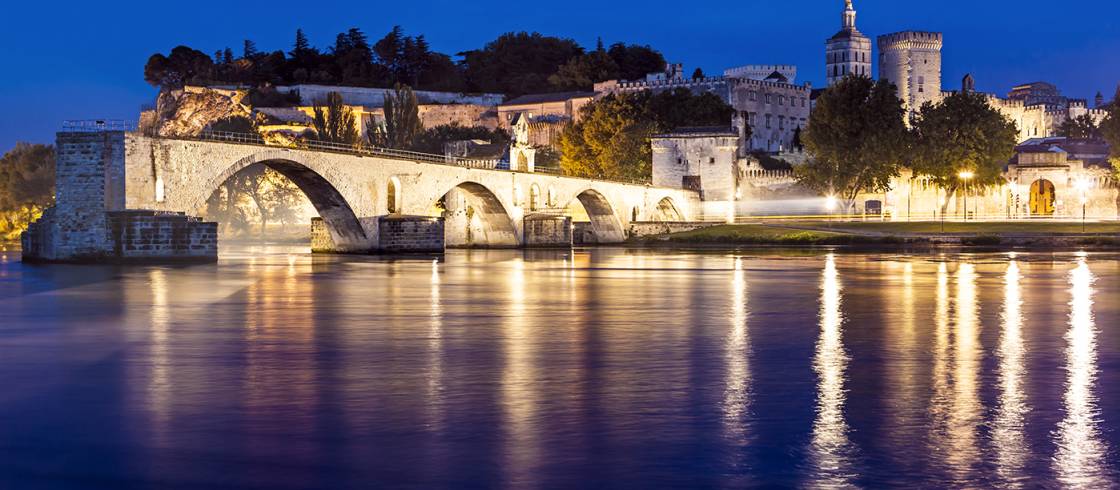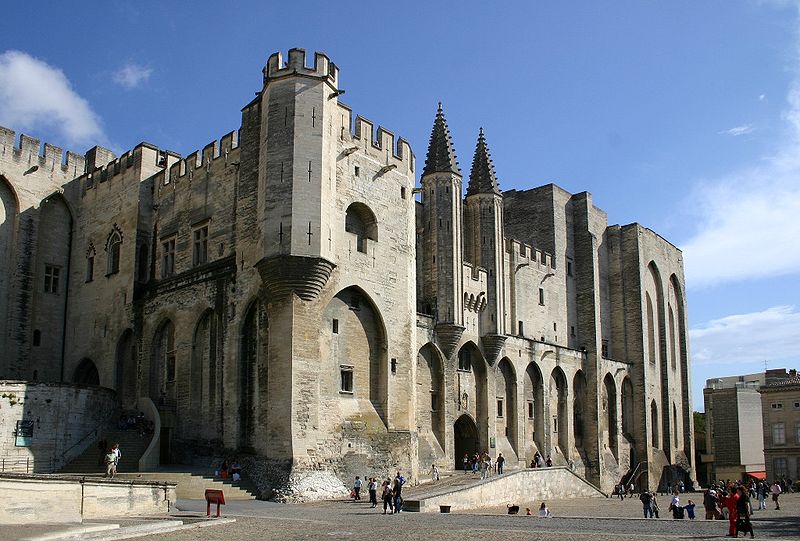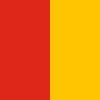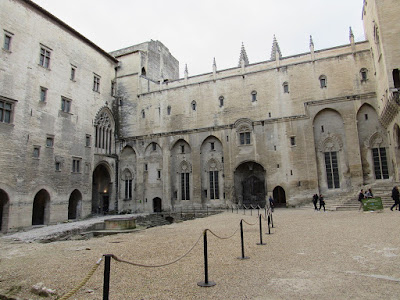
Rhônexpress © Tim Douet
After months of anticipation for our 3-week journey in France, my friend, Tracy from Kalamazoo, finally arrived at Lyon's Gare Part-Dieu (train station) on the Rhône Express. We had been planning this trip since the previous summer which would include Lyon, Le Puy, and the south of France.
We walked to our AirBNB apartment on Chaponnay, the same street I lived on two years ago when I was taking French classes. I knew the neighborhood, the transportation system, and several key points of the city so I acted as tour guide. The only glitch in our arrangements was parking the car. Every morning on my way back from the boulangerie to pick up a fresh baguette for breakfast, I fed the meter.

Machines regulate parking and you must be sure you account for your time. Evenings are free from 7 p.m. until 9 a.m. the next day. We were fortunate to park across the street from our AirBNB, however, parking cost about 35 euros a day. Had it not been for the train strike, we would not have used the car in Lyon.

Of course, the first stop in Lyon is the old city or Vieux Lyon, as it is called. Old Lyon has a variety of restaurants, shops--and St. John the Baptist Cathedral, the seat of the Archbishop of Lyon.

Groundbreaking took place in 1180 on the ruins of a 6th century church (the half circle arch).

During the French Revolution, churches were targets for destruction. Many of the statues, for example, lost their heads. Some churches became grainaries since their large spaces provided a warehouse-like function.
 Inside
the cathedral is the Astronomical Clock (to the left of the
altar).
The 9-metre 14th century clock is an astrolabe, which
indicates the date and position of the moon, sun, and earth, as well as
the stars. The first documentary evidence of an astronomical clock in
the cathedral dates from 1383 but it was destroyed in 1562. In 1661 it
was reconstructed by Guillaume Nourrisson. During the French Revolution
(1789-99),
all royal insignia was removed. The last restoration in 1954 reset the
clock's perpetual calendar to 66 years. The clock has been inactive
since 2013 but is currently under repair.
Inside
the cathedral is the Astronomical Clock (to the left of the
altar).
The 9-metre 14th century clock is an astrolabe, which
indicates the date and position of the moon, sun, and earth, as well as
the stars. The first documentary evidence of an astronomical clock in
the cathedral dates from 1383 but it was destroyed in 1562. In 1661 it
was reconstructed by Guillaume Nourrisson. During the French Revolution
(1789-99),
all royal insignia was removed. The last restoration in 1954 reset the
clock's perpetual calendar to 66 years. The clock has been inactive
since 2013 but is currently under repair. When the clock is running, it is quite an animated sight to see as this description illustrates:
The clock's central tower octagon supports several automated figures. After the angel on the left turns the hourglass, an angel on the right keeps the time for the three angels who strike bells to sound the hymn of Saint Jean-Baptiste. The Virgin Mary kneels in a chapel, and turns to the Angel Gabriel as he opens the chapel door, while a dove descends, representing the Holy Spirit. A Swiss Guard rotates around the dome. Movement stops at the sounding of the hour.
For more on Old Lyon, see Kostas and the Yummy World, a very good travel blog.
We took the funicular up to Fourvière, which was once the site of the Roman forum of Trajan in Lyon or Lugdunum, as the city was called. Gaul (the future France) was conquered for the Romans by Julius Caesar between 58 and 53 BC and Lugdunum was subsequently founded in 43 BC by Lucius Munatius Plancus. Within 50 years the city increased greatly in size and it became Rome's administrative center of Gaul and Germany and the western half of the Roman Empire for centuries. Between 69–192 A.D. the city's population may have numbered 50,000 to 100,000, and possibly up to 200,000 inhabitants. For a portrait of life in Lugdunum, the Gallo-Roman Museum is just down the street from the funicular and it has one of the best preserved collections of Roman art anywhere. Next to the museum is an amphitheatre. These days, summer concerts are held there.

Archeological evidence shows that Lugdunum goes back to the neolithic era. It later became a Gallic settlement with continuous occupation from the 4th century BC. The people there traded with Campania for ceramics and wine, and the use of some Italic-style home furnishings before the Roman conquest.
Fourvière was dedicated to the Virgin Mary, to whom is attributed the salvation of the city of Lyon from the bubonic plague that swept Europe in 1643. Each year on December 8, the day of the Immaculate Conception, the city of Lyon thanks the Virgin for saving it by lighting candles throughout the city in what is called the Fête des Lumières or the Festival of Lights. The Virgin is also credited with saving the city a number of other times, such as from a cholera epidemic in 1832.
 The
Notre Dame Basilica now occupies the top of the Fourvière hill. The
church that "looks like an upside down elephant" because of its four towers was built between 1872 and 1884 in thanksgiving for victory in the Prussian War in 1879. The basilica was financed with private funds. Today, it offers guided tours and contains a Museum of Sacred Art. Two million people annually visit the basilica.
The
Notre Dame Basilica now occupies the top of the Fourvière hill. The
church that "looks like an upside down elephant" because of its four towers was built between 1872 and 1884 in thanksgiving for victory in the Prussian War in 1879. The basilica was financed with private funds. Today, it offers guided tours and contains a Museum of Sacred Art. Two million people annually visit the basilica.
The basilica interior
 |
| Confluence silhouette |
We went to the very end point of the Confluence where the Rhône and Saône Rivers meet.
The Rhône, one of France's five great rivers, starts in the Swiss Alps and runs south 813 km (505 miles) to the Mediterranean Sea. In Arles, the Rhône splits into two branches and forms a delta, which constitutes the Camargue region of Provence. The Saône River, a tributary of the Rhône, starts in northeastern France and converges at the Confluence in Lyon. The Saône runs 473 km (294 miles).
The Museum of the Confluence (background) is a modern building based on deconstructivist architectural design. It is built in a newly-developed area of Lyon that was formerly industrial. The design of the building is said to resemble a floating crystal cloud of stainless steel and glass.
Deconstructivism, first appeared in the 1980s and illustrates the fragmentation of a constructed building characterized by an absence of harmony, continuity, or symmetry. Instead, the finished visual appearance is characterized by unpredictability and controlled chaos. The museum certainly illustrates the point, however, it does have a lovely design. Really!
Silk was the major industry in Lyon. It was centered in Croix Rousse up on the city's other hill that overlooks the Rhône River. The L'Atelier de Soierie on the Place des Terreaux near the center of town specializes in silk screening. Here are some beautiful and colorful handmade scarves. The shop also provides visitors with demonstrations of its silk screening process.
 Near the Place des Terreaux is Ikon, a chocolate fondue shop that can bring anyone to a state of ecstacy and utter decadence. We tried the fruit plate, which is really designed for a group of four people. After we finished our gouté (snack), we were quite overwhelmed by the chocolate--for days.
Near the Place des Terreaux is Ikon, a chocolate fondue shop that can bring anyone to a state of ecstacy and utter decadence. We tried the fruit plate, which is really designed for a group of four people. After we finished our gouté (snack), we were quite overwhelmed by the chocolate--for days. 

Lyon is one of the great centers of French cuisine. After over-doing it at the chocolate fondue shop, we resorted to eating our main meal in the afternoon and have salads in the evening. This is a very French thing to do. Lyonaise salad (foreground) is the city's specialty while Tracy had a salmon salad.

On one evening, we met Sisters Marie Phillippe and Rose for dinner. These sisters had hosted me twice at their apartment when I was taking French language lessons. They served duck with stewed chestnuts, which was very good. For dessert, they served a Noël busch cake while we brought some yummy pasteries....and a chocolate shoe.


One day we had lunch at a restaurant near the French language school that I had attended in March 2017 and January 2018. Tracy had scrambled eggs and yogurt, and I had a salad and special coffee. We visited the shop that has the best French fries in the world. Unfortunately, we were too full to order some. Better luck next trip.



The Rhone riverfront continues to be a dynamic and beautiful setting both day and night. Walkways run up and down the river. On Sundays, many families take a walk along the river.

Lyon was only the beginning of our time together. Tracy and I would return to Le Puy for a few days and then head south to Avignon and Nice.








































